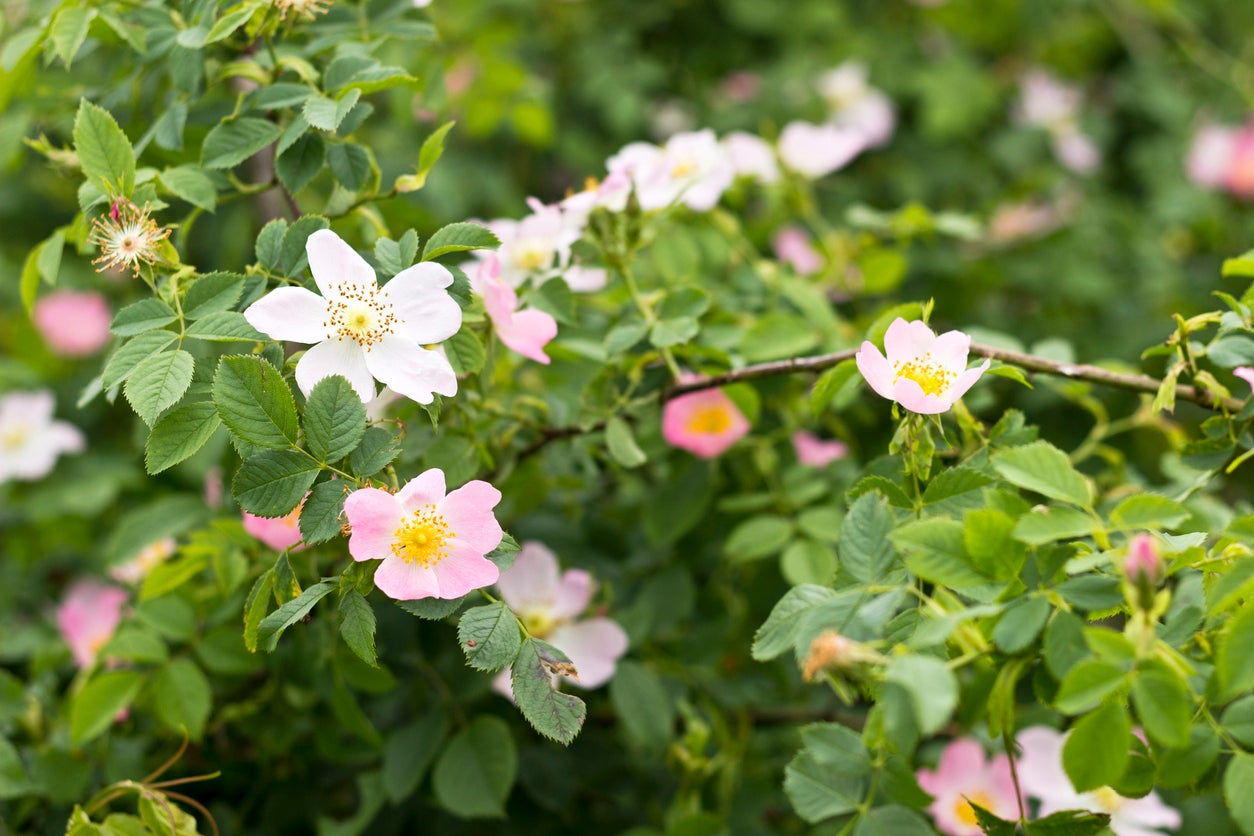Can You Move Wild Rose Bushes: Learn About Transplanting Wild Roses


Cultured roses are the royalty of the family, with layers of heavy, velvety petals and elegant shapes. If you prefer a wildwood to the Kew Gardens, who can blame you? That means you may prefer transplanting wild roses into your backyard sanctuary. Can you move wild rose bushes? It’s perfectly okay to transplant a wild rose as long as it is growing on your own property. In order to make sure the plant survives though, read up on some wild rose transplant tips.
Can You Move Wild Rose Bushes?
Of course, you know that it is not okay to go transplanting wild roses from someone else’s land or even public park land without permission. Since lots of people consider these bushes weeds, permission may not be difficult to come by. In fact, some, like the multiflora rose, can become quite invasive in certain areas.
If you have these shrubs growing on terrain you own or if you get the owner’s permission, it’s perfectly okay to think of moving wild rose bushes into your garden. There are lots of reasons to do so too.
Moving Wild Rose Bushes
Wild roses are tough plants to survive in the abandoned sites they frequent. They grow fast and tall, protect themselves with abundant thorns, and don’t ask for help from anybody.
Plus, they produce roses like Mother Nature intended them to look, flowers with five delicate petals and yellow stamen. The blossoms froth up a field in spring, then die back. Their second ornamental act comes with the big, red rose hips that appear in autumn and hang on the bare brambles through winter.
Moving wild rose bushes is not difficult and the plants are not picky about site. Although, you’ll want to be sure to transplant a wild rose at the right time, using a few wild rose transplant tips.
Wild Rose Transplant Tips
If you follow a few wild rose transplant tips, you have a much better chance of success. The first involves appropriate timing.
Gardening tips, videos, info and more delivered right to your inbox!
Sign up for the Gardening Know How newsletter today and receive a free copy of our e-book "How to Grow Delicious Tomatoes".
Can you move wild roses while they are blooming? You should not attempt this, although the plants certainly look their best when the pale flowers are out. Instead, you should always transplant a wild rose when it is dormant, usually November through February (late fall through winter).
You’ll want to cut back the stems to around 6 inches (15 cm.) before you start digging. You won’t need all that stem and it makes it harder for the plant to get going in its new location. Cut the stem on a diagonal just above a bud.
Dig out as much of the root as possible, but don’t fret if you can’t get it all. These are tough, resilient plants and will likely survive. Put them in a sunny location with well-draining soil, then give them time to adjust. Even if they wilt initially, the odds are they will send up new shoots in spring.

Teo Spengler is a master gardener and a docent at the San Francisco Botanical Garden, where she hosts public tours. She has studied horticulture and written about nature, trees, plants, and gardening for more than two decades. Her extended family includes some 30 houseplants and hundreds of outdoor plants, including 250 trees, which are her main passion. Spengler currently splits her life between San Francisco and the French Basque Country, though she was raised in Alaska, giving her experience of gardening in a range of climates.
-
 Looking For Plants To Give You The Soft And Fuzzies? Try These 5 Fuzzy Leaf Plant Options
Looking For Plants To Give You The Soft And Fuzzies? Try These 5 Fuzzy Leaf Plant OptionsLovers of texture, drama, silver foliage and tactile plants will adore these special sensory garden additions. These fuzzy leaf plant options will leave you all aglow
By Susan Albert
-
 Get Ready For A Summer Of Hummers! Grow These Full Sun Hummingbird Plants and Flowers
Get Ready For A Summer Of Hummers! Grow These Full Sun Hummingbird Plants and FlowersIf you’re lucky enough to enjoy a sunny backyard, make sure you are maxing out on your pollinator opportunities and grow these full sun hummingbird plants and flowers
By Tonya Barnett